Micro-blasters, Feathers, Catenaries, and Macro-rain
By Andy Jansky
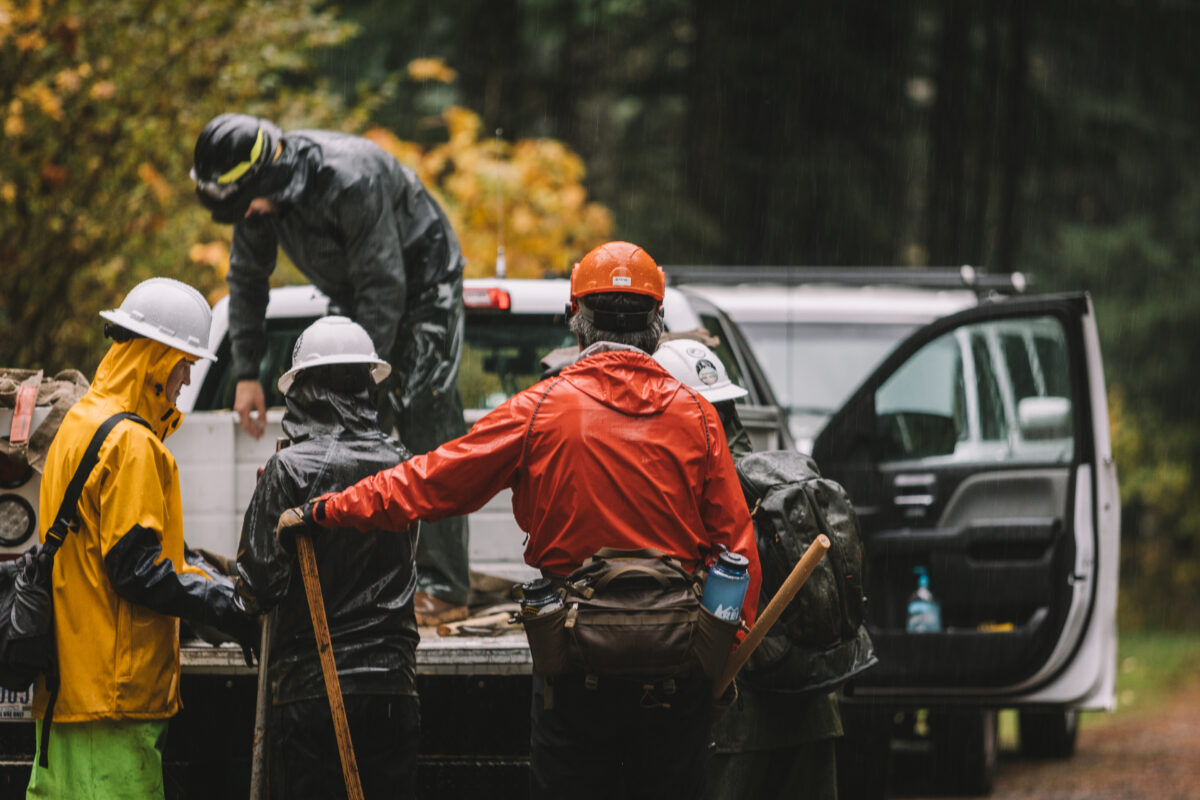
Most people with common sense stayed home on Saturday, November 4th as it rained more than an inch in the Gorge. Meanwhile, 12 hearty NWTA volunteers braved the rain, wind and thunder to learn how to use a variety of tools and specialty equipment for moving, splitting and integrating large boulders into trail retaining walls. Most of our NWTA trail work involves attending to drainage, improving tread and clearing the corridor, so dealing with heavy rock work is a newer endeavor for these volunteers. When looking for an expert in rock work trail design, look no further than the US Forest Service Trail Manager in the Columbia River Gorge National Scenic Area to bring the expertise along with the coolest tools.
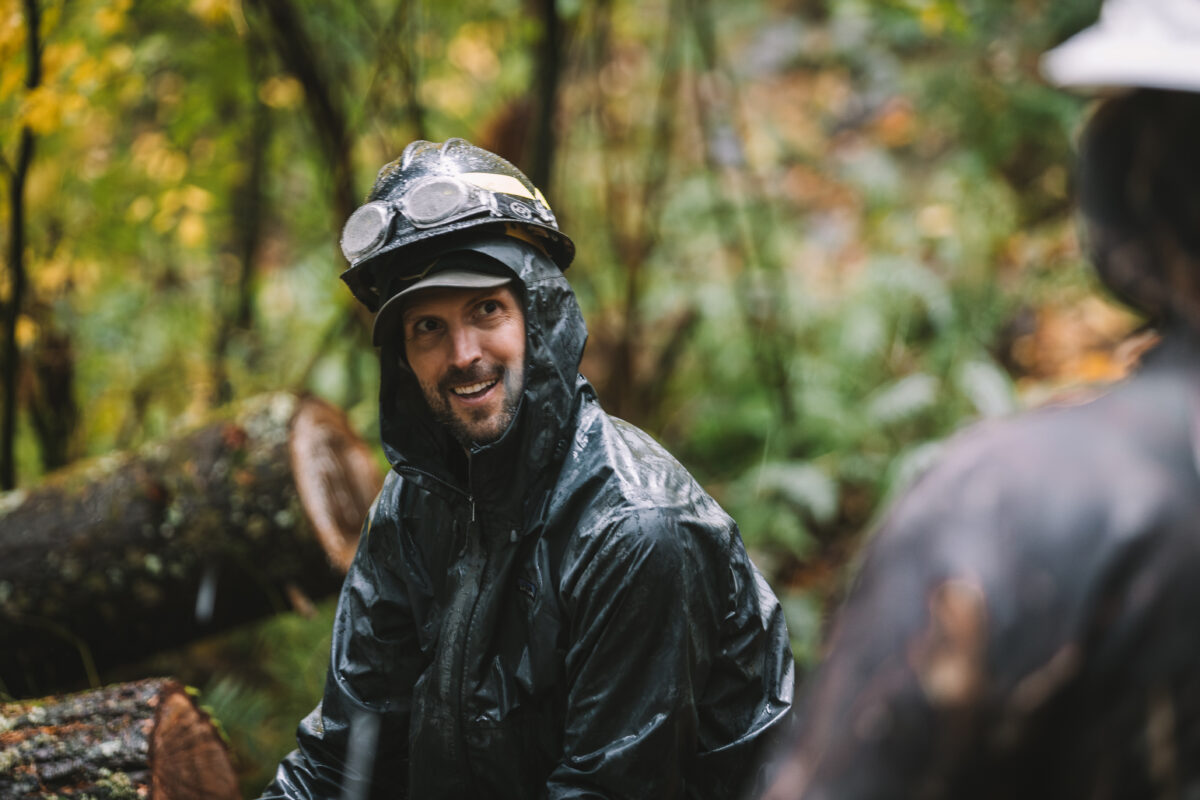
Our instructor Nathaniel Brodie, the Trails Manager for the Forest Service, Columbia River Gorge National Scenic Area, has extensive trail building experience across the west in National Parks, including Grand Canyon National Park (the guy knows about rocks). His expertise and breadth of knowledge about safety and techniques helped us understand the power and risk of these special tools.
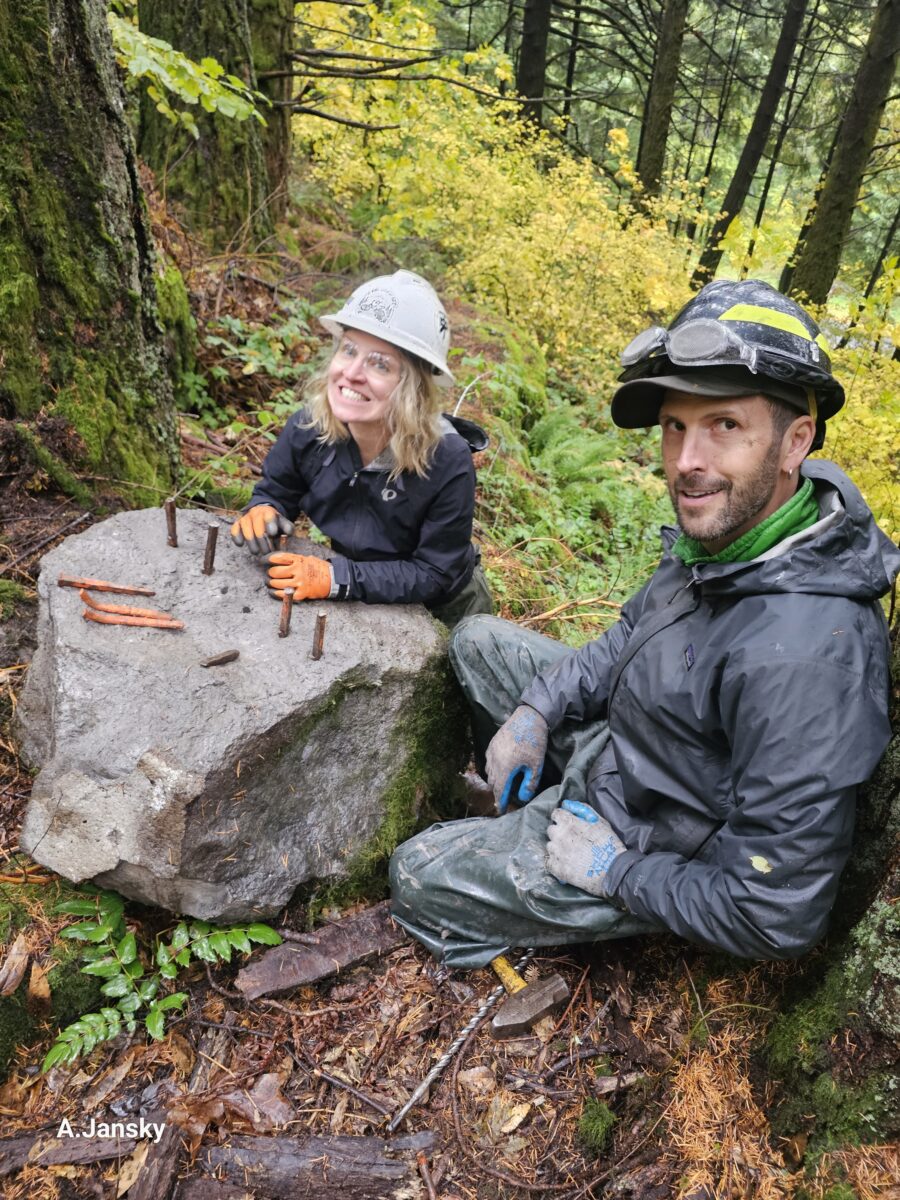
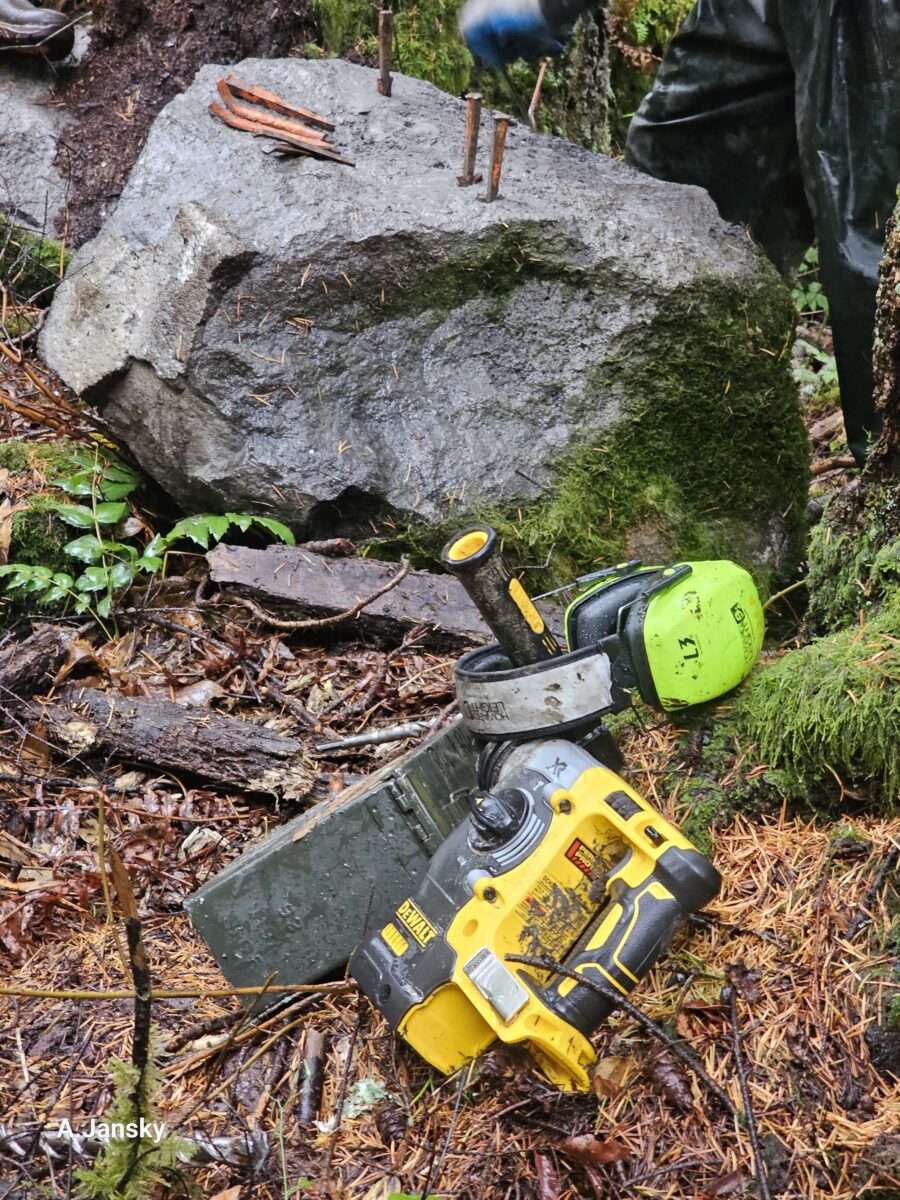

Some of the highlights included use of rock drills to create small holes in rocks to split them using a micro-blaster. It is basically a large firecracker detonated with a special mechanism that fires a small ignitor, powered by a remote bike pump. Not exactly as earth shattering as dynamite, but a very powerful tool. We also drilled and split multiple large boulders for use in rock retaining walls with ‘feathers and wedges’. If you have ever seen a smooth round hole in a rock on a trail, it was likely built using these steel shims split by a wedge.
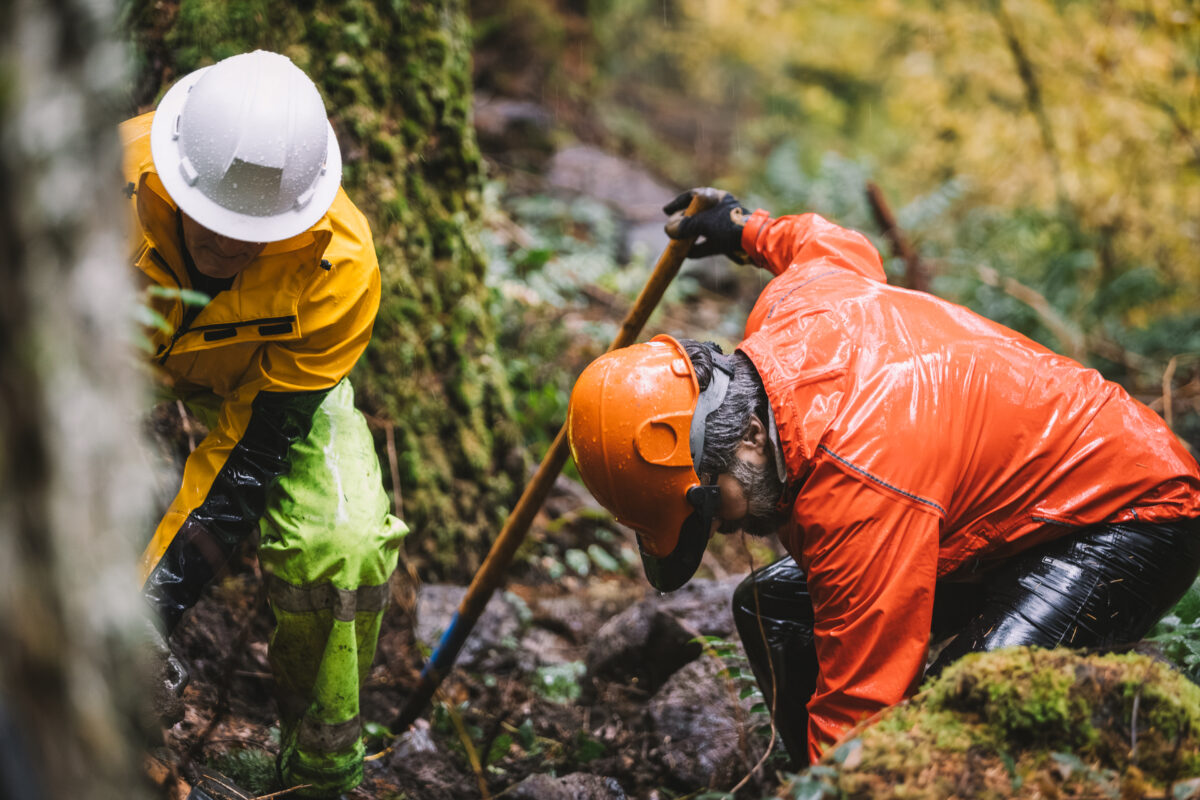
After the boulders, many 4 ft in diameter and well over 5000 lbs, were split into manageable blocks, we used a high line system rigged in the trees above to move the rocks and place them. This system relies on two large trees, a special rope connecting them with pulleys and a winch. The rocks are placed in a net and attached to this system. With a special hand powered winch and steel cable the main rope is tightened lifting the rock in its sling. After the rock is a few feet off the ground it is pulled along the trail using another set of ropes and pulleys. Nathaniel explained how to plan and design a rigging system, the catenary shape the loaded line follows, and overall safety. Watching a rock effortlessly navigate very slowly through the air is pretty magical.
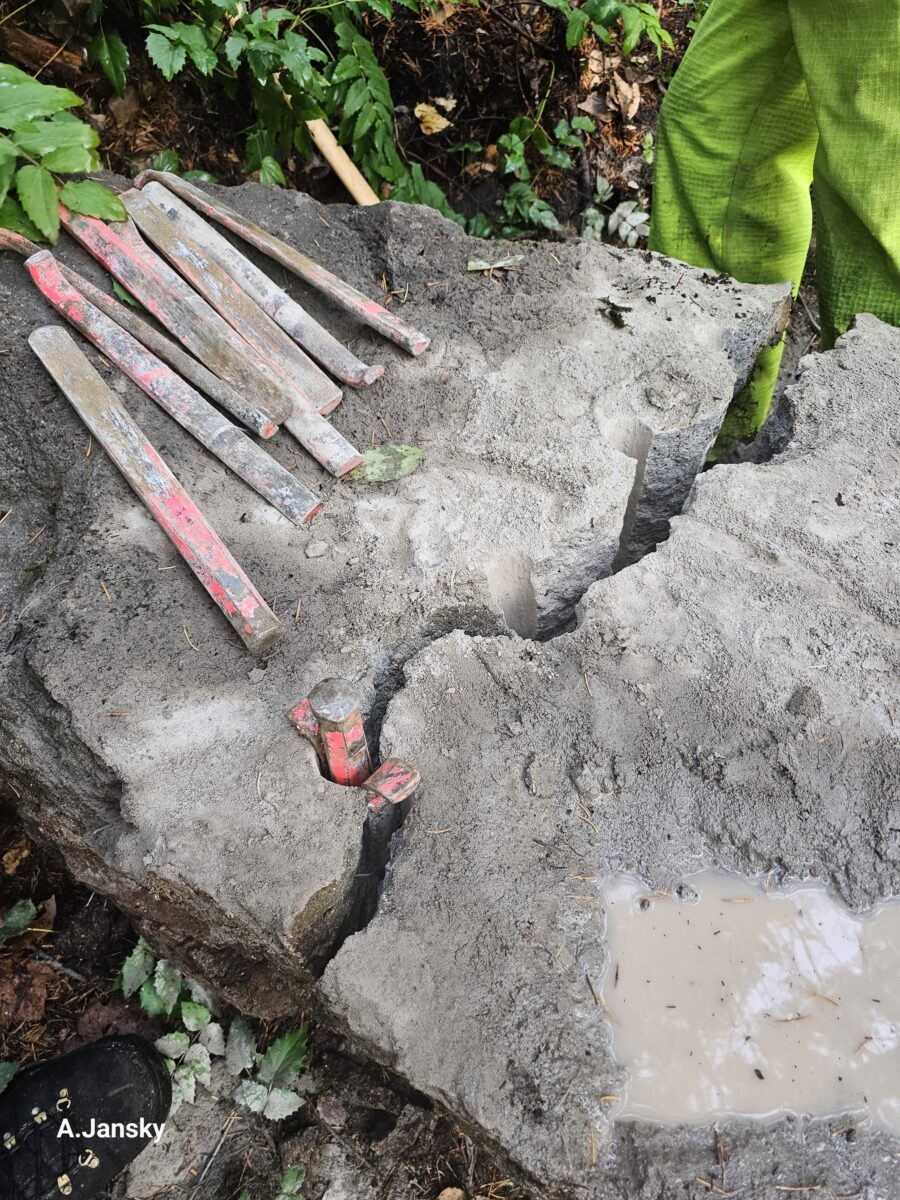
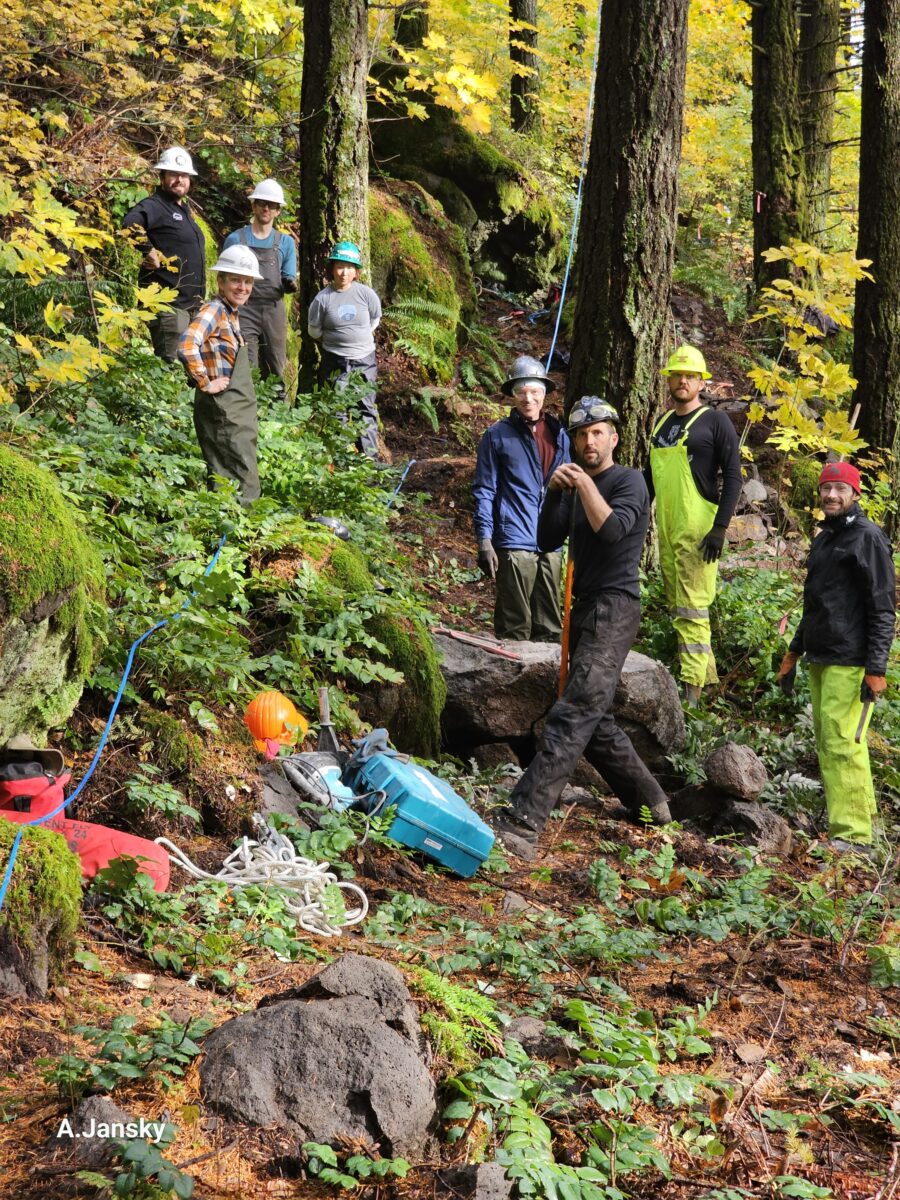
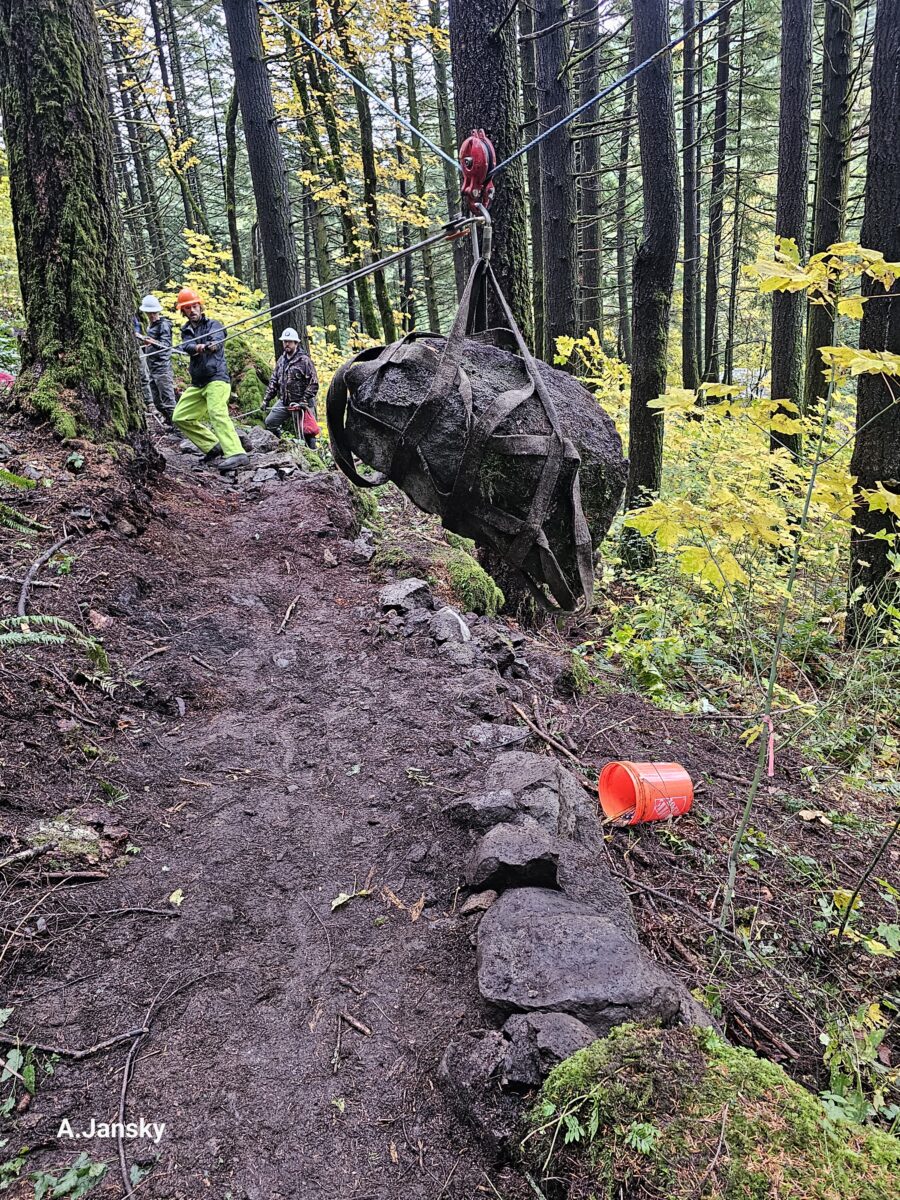
This was compared to the day before, when we moved large rocks by hand using rock slings and rock bars to pry rocks inch by inch down the hill and into position. Everyone has a new appreciation for rock bars, large fulcrums and how to ‘row’ a rock into position. Basic wall design was reviewed including how walls fail, importance of a good foundation, tie-back rocks and making gravel out of bigger rocks. Attendees were discussing which “type of fun” this was as it rained harder than many have seen in the past. There was much discussion on the estimated size of the raindrops including the “size of large grapes” or “the size of baby mice”. Gear was tested to the limits. It was wet.
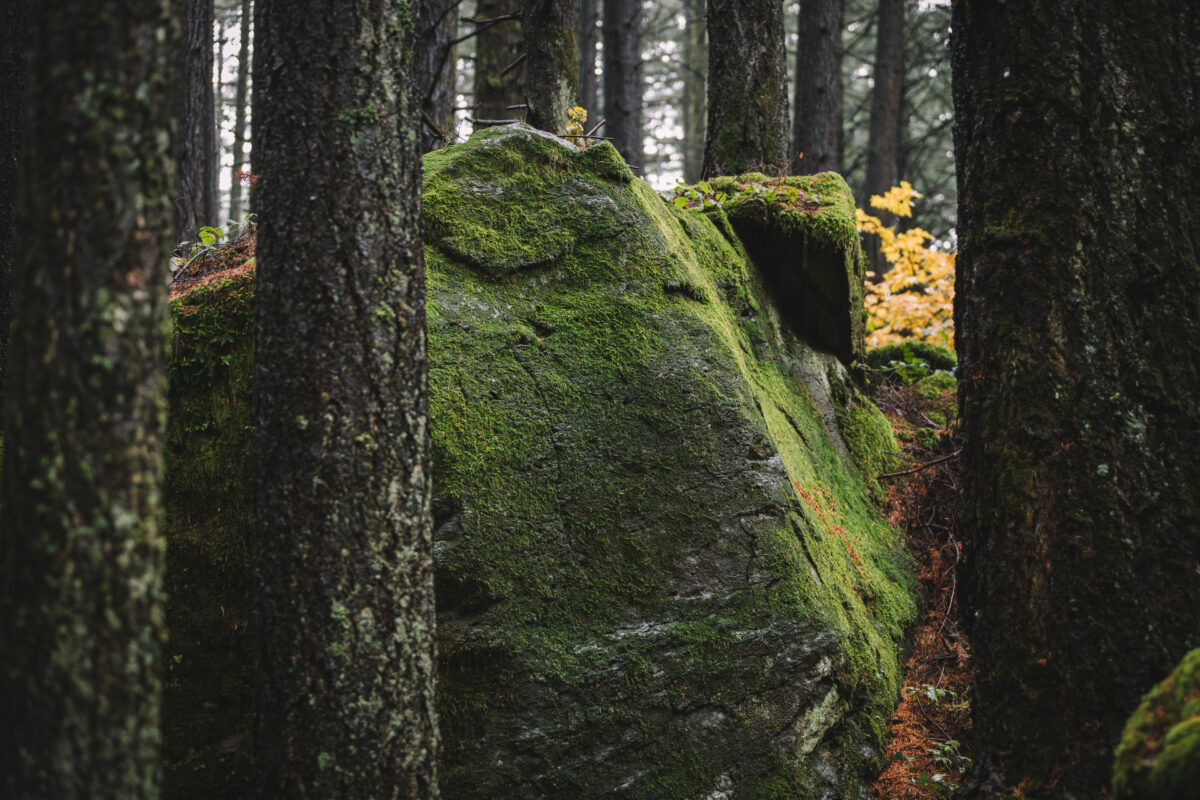
A key part of this event was integration of our Trail Sustainability Institute (TSI) teachings, and we are very excited to partner with USFS, who shares our interest and teachings of the three principle foundations. Nathanial and Nancy, our Education Director, led a review of these principles and how they apply to this project and our work. Nancy is looking forward to a continued partnership with the USFS, with this trail as a training ground. To know more about these principles, sign up for an upcoming Trail School class.
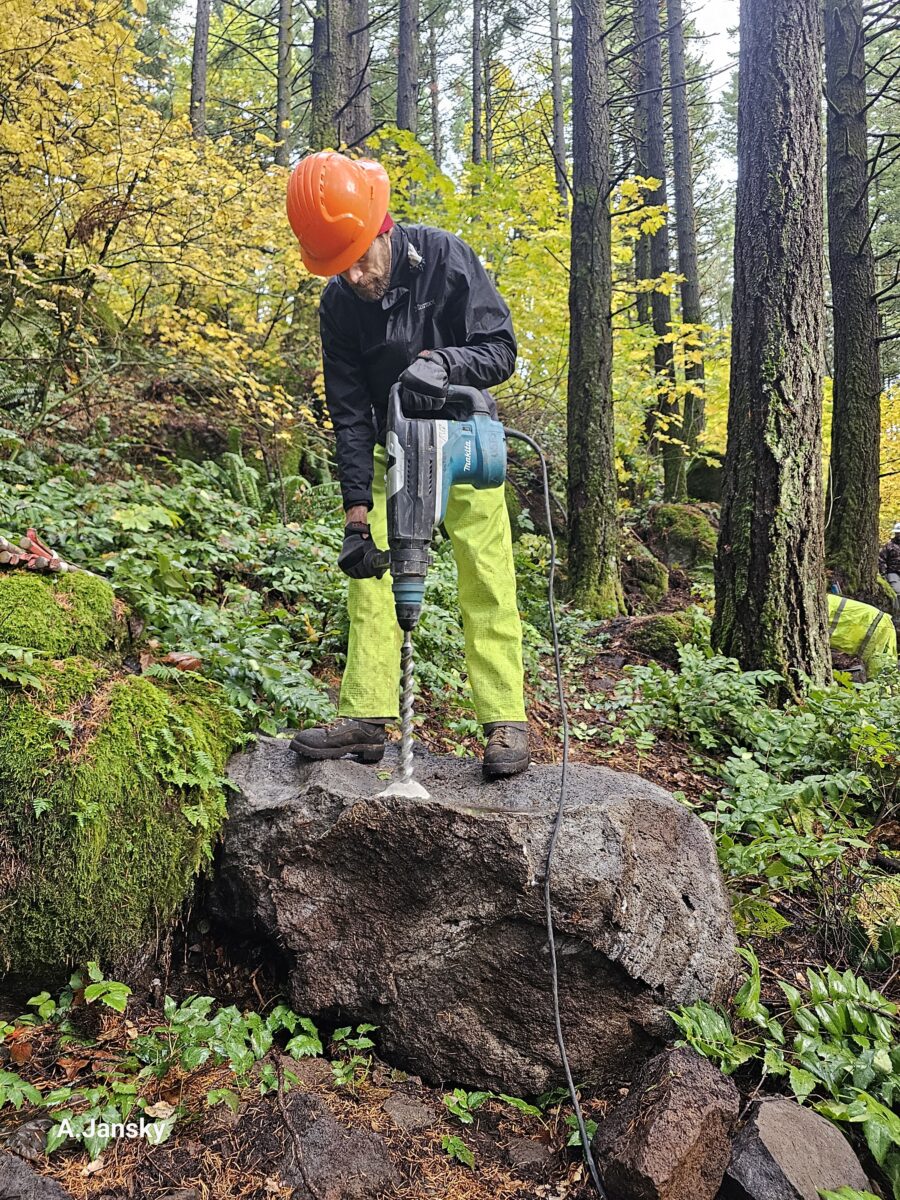
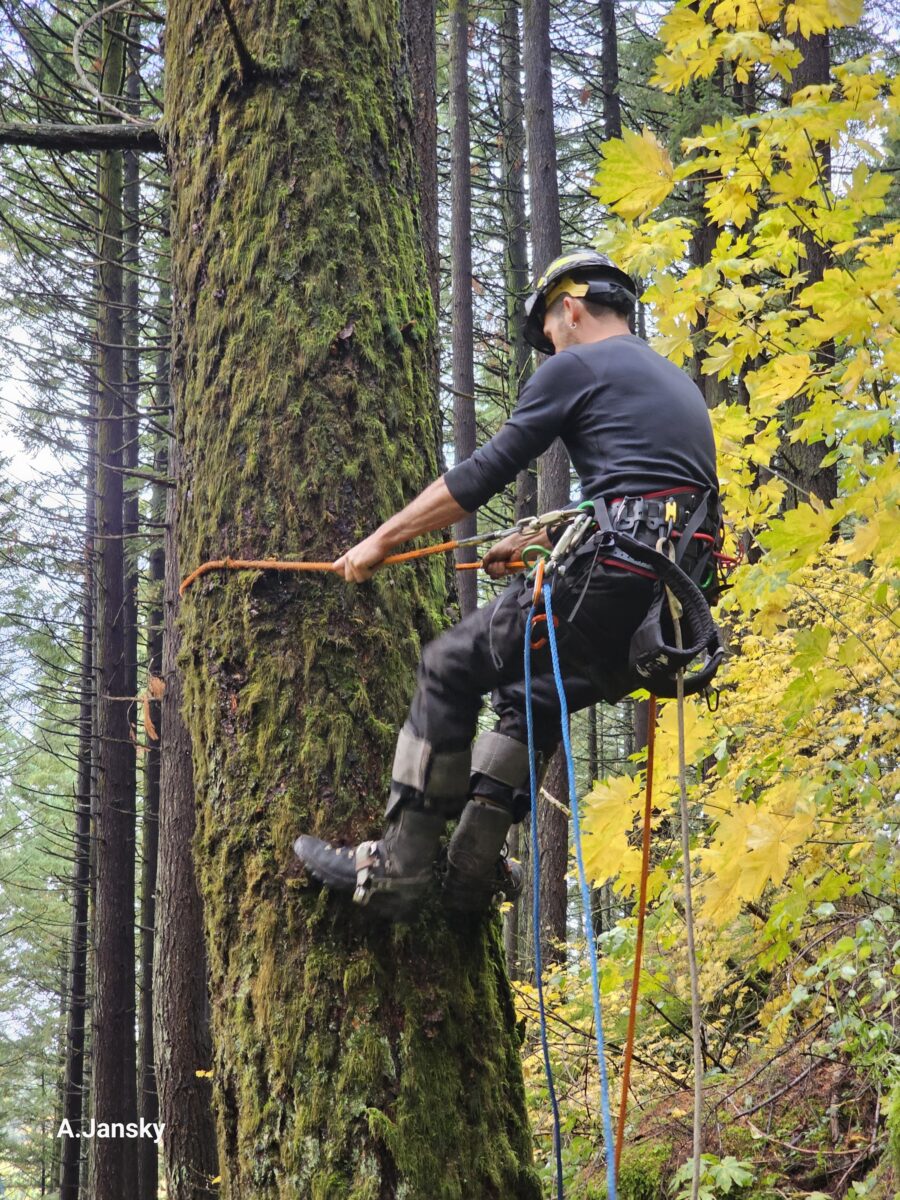
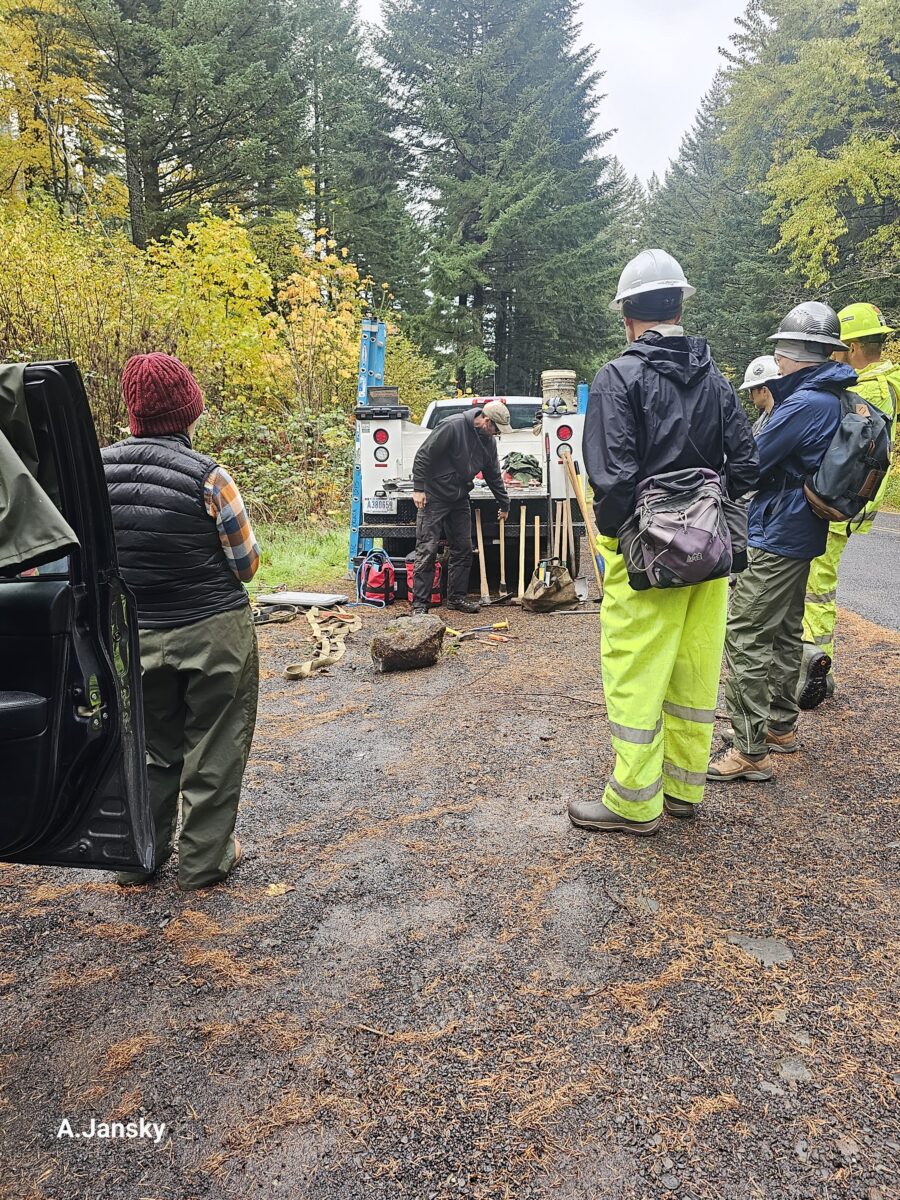
It is tough to recall the best part of this trail building educational event, but a hot bowl of chili on a rainy day, drying your soaking rain gear by a fire with your friends, or learning something new at 60 are at the top of the list. This trail is going take a lot of similar work parties to build retaining walls, shape rock and craft a trail through boulders, but this is the first major trail to be built and open to bikes in the Gorge National Scenic Area, and will be a ‘forever trail’, so it is worth the investment in volunteer time to make it special.
